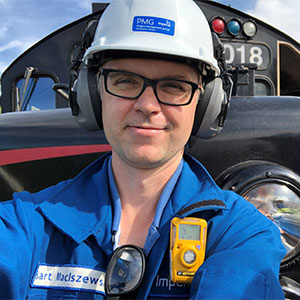
Bart Maciszewski
Bart Maciszewski
Optimization and Data Scientist at Imperial Oil
Bart graduated from University of Toronto with a Bachelor of Computer Engineering and Master of Engineering in Industrial Engineering degrees. He has been working for ExxonMobil and Imperial Oil for over 20 years across a number of technical disciplines from software engineering, data architecture, systems analysis, to data science, operations research and AI. His current focus is building AI and optimization models for Kearl oil sands – a large open pit mining operation. Some of his most recent projects included modelling mill recovery, ore blending, and mine truck maintenance scheduling optimization. He has also worked for several years at one of Canada’s largest refineries in Edmonton where he designed and built AI solutions at one of ExxonMobil’s largest rail yards to automate inspections and optimize scheduling movement of rail cars. His personal interests include data driven astronomy and application of data science to competitive sailing.
Track: Manufacturing
Predicting Extraction Excursions Using Explainable AI
Kearl oil sands is a large open pit mine in Northern Alberta leveraging a fleet of shovels and autonomous haul trucks feeding two processing facilities. Water based gravity separation is used as a primary method of oil extraction. The ore varies in geologic properties and has different processibility characteristics. In this work we build a model to predict likelihood of elevated extraction excursions based on the ore characteristics and plant processing variables. Previous attempts at this problem have been challenged due to highly noisy data and lack of model transparency. We address the first of these challenges by leveraging process surveillance data to isolate to relevant excursion periods where other factors are negligible. To address the second challenge we employ SHAP to time series to shed light on what is driving the model predictions leading up and during events. Our production model evaluation is promising and has uncovered other potential uses of the approach to not only predict but also highlight process control adjustments or post event root cause analysis

